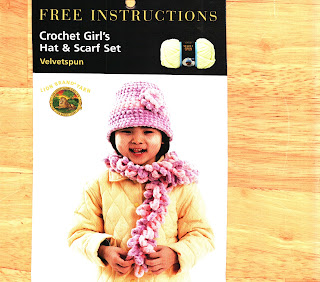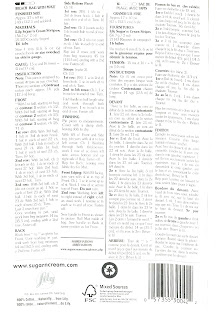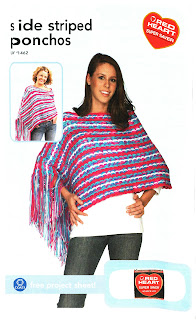It is the end of April and it is freezing out. 44 degrees F. I thought it was suppose to be in the 60s by now. All my winter clothes had been put away at the beginning of the month. Looking forward to seeing what still fit me after the usual weight gain from the long stagnant winters. Perhaps a few days of shorts, 1 day a dress but all a sweater was worn due to the breeze.
Looking out the window, as I listen to the furnace kick on, thinking to myself " what I would not do to be in Florida or one of the Southern Countries like Brazil or Mexico. It is raining here, no more like a drizzle the kind the clings , damp seeping to the bones. Oh how you have to love to hate this place. It's called Indiana .
Sunday, April 29, 2012
Saturday, April 28, 2012
Thursday, April 26, 2012
Pattern Testing Vs Writing the Pattern
I have tested I dont know how many patterns anymore, but I find that lately I am rewriting others patterns for them. Some of the newer designers are slapping together work with out a hint of how to write it on paper. That or they dont take the time to stop row to row. They need to understand how time consuming it is to test the pattern, make it check for mistake, but when the entire pattern is nothing but a mistake. UGH. End proof , they get all the credit, you get a free pattern and a pat on the back, oh and no kick back.
I guess I should spend more time creating , but I watch so many patterns and design and years upon years of books. Everything is looking like repeats, copies. Ladies fighting over who made what. Is it really worth it?. I guess it's better to sit in the back, correcting the designers flaws, enjoy the free pattern and let them fight it out over who made what.
By the way, yes I am sort of bitching and no in a way I am not. It is all in how you look at it I guess. I personally enjoy testing others ideas just hate undoing there knots. (yarn joke there people)
Gayle
I guess I should spend more time creating , but I watch so many patterns and design and years upon years of books. Everything is looking like repeats, copies. Ladies fighting over who made what. Is it really worth it?. I guess it's better to sit in the back, correcting the designers flaws, enjoy the free pattern and let them fight it out over who made what.
By the way, yes I am sort of bitching and no in a way I am not. It is all in how you look at it I guess. I personally enjoy testing others ideas just hate undoing there knots. (yarn joke there people)
Gayle
Friday, April 13, 2012
Sunday, April 08, 2012
Information on Looms
During my usual daily surfing I came across this article about looms. I am always asking questions about them because I own the Knifty Knitters and the Martha Stewart Loom / Weave sets. I have never owned a wood loom and of course wondered if it would be worth investing, or even in a large weaving unit that makes rugs.. I hope this help you as it gives a little insight.
original link is below if you would like to search their site.
http://www.favecrafts.com/Loom-Patterns/A-Guide-to-Loom-Knitting/ct/1
A Guide to Loom Knitting By: Caley Walsh
Loom knitting uses a wood or plastic knitting loom instead of needles to knit fabric from yarn. Knitting looms come in a wide variety of shapes and sizes. In loom knitting, the yarn is wrapped around the pegs of the loom in a simple weaving technique. Different wrapping techniques result in different stitches and patterns on the fabric.

Knifty Knitter
Round Knitting Looms
The pegs on a knitting loom correspond to stitches held on the knitting needles. The gauge of a knitting loom is determined by the distance between the pegs and the size of the pegs. Most knitting looms come with a metal hook or “pick” which is used to grab and pull the yarn over the pegs.
Loom knitting requires less dexterity and causes less strain on the hands than needle knitting. This simplicity makes loom knitting ideal for children and those suffering from arthritis or carpal tunnel syndrome. Loom knitting can create flat items, such as a scarf or afghan, and round items, such as a hat or sock.
If you are especially handy, you might consider making your own knitting loom. At simplest, you will need a smoothly sanded wood board, metal nails to create the pegs, a precise ruler and a pencil. You will space the pegs from ½ inch to ¾ inch apart depending on the types of projects you want to make. For specific instructions on how to make a knitting loom, see links below.
Round- Unlike a rake, a round loom has no starting or stopping point and can be worked continuously. This stitch continuity is the important distinction for this loom rather than the shape. “Round” looms can actually come in different shapes like triangle, square or oval. Circle looms are often used to make hats. Triangle looms can be used to create triangle-shaped shawls. Gauge for round looms is determined by the distance between pegs.
Knitting Boards- A knitting board is two, connected parallel rakes used to create double knit fabric, or fabric that is finished on both sides. Unlike rake loom knitting with a right (knit) and wrong (purl) knit side, knitting boards create a fabric with the purl sides hidden inside, facing each other. Knitting boards are often adjustable to create different width between the two rakes. The gauge for knitting boards is determined by the distance between pegs AND the distance between the rakes.
original link is below if you would like to search their site.
http://www.favecrafts.com/Loom-Patterns/A-Guide-to-Loom-Knitting/ct/1
A Guide to Loom Knitting By: Caley Walsh
Loom knitting uses a wood or plastic knitting loom instead of needles to knit fabric from yarn. Knitting looms come in a wide variety of shapes and sizes. In loom knitting, the yarn is wrapped around the pegs of the loom in a simple weaving technique. Different wrapping techniques result in different stitches and patterns on the fabric.

Knifty Knitter
Round Knitting Looms
The pegs on a knitting loom correspond to stitches held on the knitting needles. The gauge of a knitting loom is determined by the distance between the pegs and the size of the pegs. Most knitting looms come with a metal hook or “pick” which is used to grab and pull the yarn over the pegs.
Loom knitting requires less dexterity and causes less strain on the hands than needle knitting. This simplicity makes loom knitting ideal for children and those suffering from arthritis or carpal tunnel syndrome. Loom knitting can create flat items, such as a scarf or afghan, and round items, such as a hat or sock.
If you are especially handy, you might consider making your own knitting loom. At simplest, you will need a smoothly sanded wood board, metal nails to create the pegs, a precise ruler and a pencil. You will space the pegs from ½ inch to ¾ inch apart depending on the types of projects you want to make. For specific instructions on how to make a knitting loom, see links below.
Knitting Loom Types
Rake- A rake is simply one line of pegs. You can only do flat knitting on a rake loom, and the fabric will have a right and wrong side. Gauge for rake looms is determined by the distance between pegs.Round- Unlike a rake, a round loom has no starting or stopping point and can be worked continuously. This stitch continuity is the important distinction for this loom rather than the shape. “Round” looms can actually come in different shapes like triangle, square or oval. Circle looms are often used to make hats. Triangle looms can be used to create triangle-shaped shawls. Gauge for round looms is determined by the distance between pegs.
Afghan Looms- Simple afghan looms can be oval-shaped, while many afghan looms are curved into an S-shape or figure 8 to take up less space. They come in single and double-rake varieties, like knitting boards. Some have an adjustable peg to allow for creating round-tubes on each side of the figure. Small looms allow you to create afghan squares which are sewn together later.
Sock Looms- Sock looms come with a very fine gauge and many are adjustable, allowing you to create different size socks for the whole family.
Knitting Boards- A knitting board is two, connected parallel rakes used to create double knit fabric, or fabric that is finished on both sides. Unlike rake loom knitting with a right (knit) and wrong (purl) knit side, knitting boards create a fabric with the purl sides hidden inside, facing each other. Knitting boards are often adjustable to create different width between the two rakes. The gauge for knitting boards is determined by the distance between pegs AND the distance between the rakes.
Saturday, April 07, 2012
Meet Me on Facebook
Ladies and Gentleman the reason I have not been posting for what seems like forever is because I have been on Facebook. There you will find ALL my pictures, every completed item. I Invite you to come and take a look and become a "friend"
You can find me by this link http://www.facebook.com/Flametide
I look forward to seeing you.
Oh and if there is a pattern you are looking for please feel free to contact me. I have thousands of patterns from all around the world.
God Bless
Gayle
You can find me by this link http://www.facebook.com/Flametide
I look forward to seeing you.
Oh and if there is a pattern you are looking for please feel free to contact me. I have thousands of patterns from all around the world.
God Bless
Gayle
Subscribe to:
Comments (Atom)

































.png)




































.jpg)








.JPG)






